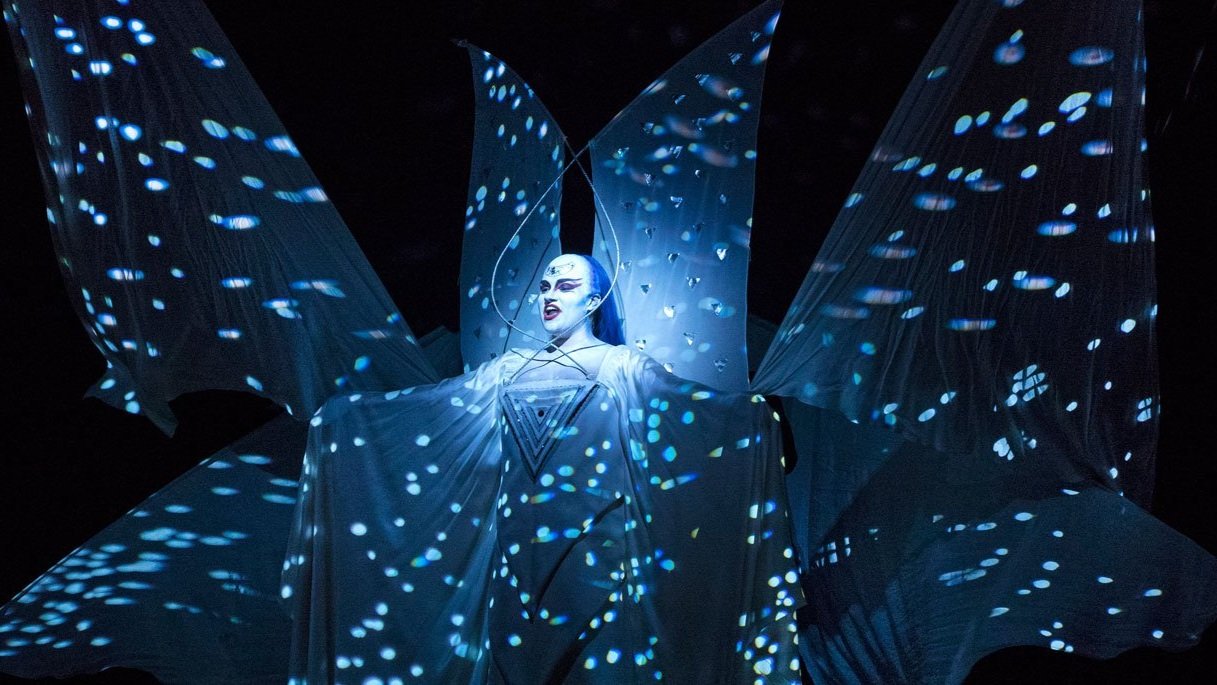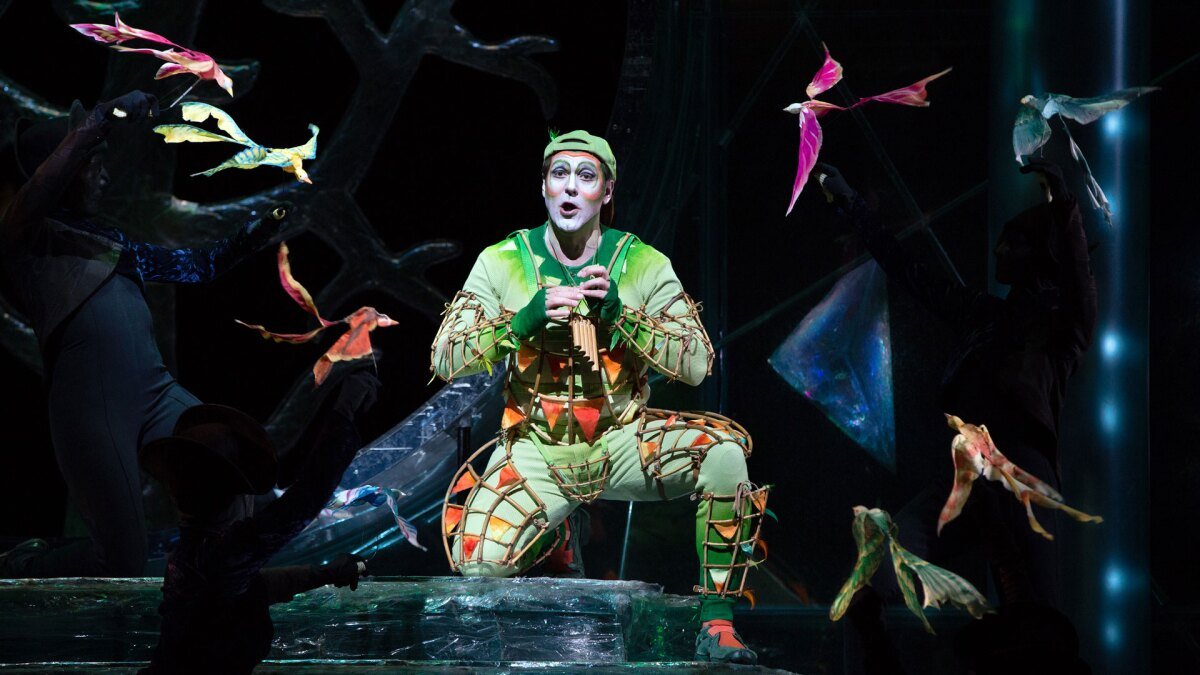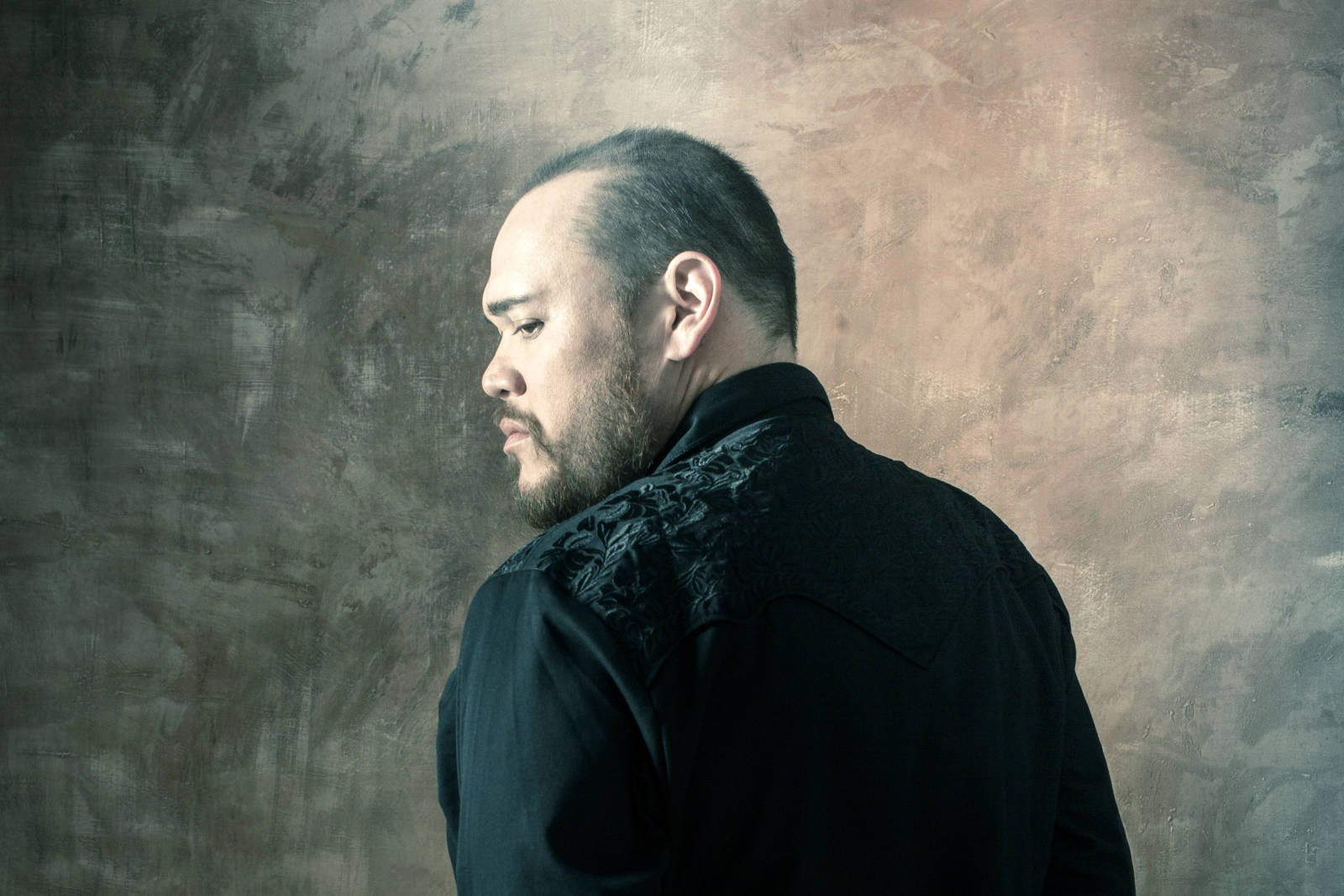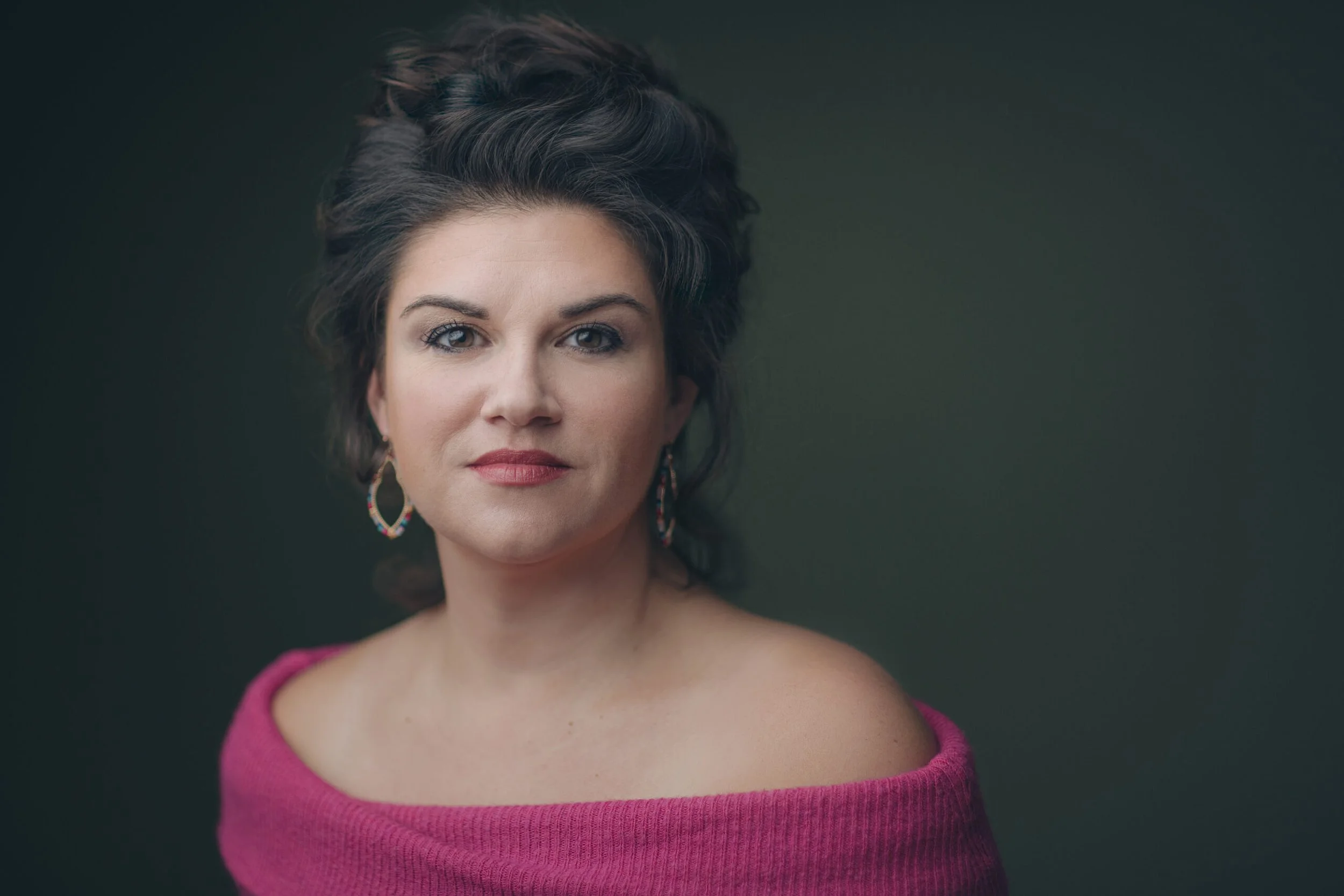A Whimsical “Magic Flute” at the Met
Kathryn Lewek in The Magic Flute (Richard Termine/Met Opera)
Every December, as Christmas, Hanukkah, Kwanzaa, and the new year dance nearer and nearer, thousands of children flock to the Met with their families. Toddlers, tweens, and teenagers alike partake in a tradition that has fast become a beloved staple of the New York holiday season: Julie Taymor’s enchanting and imaginative production of Mozart’s most fanciful opera, The Magic Flute.
Presented in English to be more accessible and straightforward for its young audience, The Magic Flute is one hour shorter than its unabridged German papa, Die Zauberflöte. Now a mere two hours long, it provides just the right blend of action, singing, and speaking to maintain its flow and energy. Speaking is unusual in opera, but Die Zauberflöte is a singspiel, literally meaning “sing-play.”
Julie Taymor’s production of the full-length Die Zauberflote premiered in 2004, and the Met, grasping the production’s potential appeal to families, jumped to put together the shortened version. Their gamble proved wildly popular, and now, when the holidays roll ‘round each year, The Magic Flute appears, attracting audiences both old and new.
The music is delightful and entertaining but also has its dramatic points. For example, The Queen of the Night gets only nine minutes of stage time, but she gets the real showstoppers. Most famously, she sings “Here in my heart,” (“Der Hölle Rache” in the original German) when she comes to Pamina in the sorcerer Sarastro’s temple. The sheer coloratura skill required in these arias is mind-blowing.
David Portillo with the dancing bears in The Magic Flute (Karen Almond/Met Opera)
Puppets are a big part of the production’s imagery and appeal. When our hero, Prince Tamino, first plays his magic flute, first one, then three, and finally six white bears wander into the scene and begin shimmying to the flute’s entrancing tune. These are puppets, of course, but the image of a family of bears dancing behind Tamino has become the production’s visual signature.
The Magic Flute is the perfect introduction to opera for children. It’s a fairy tale at its lightest and most charming, making comic use of a core tenet of fairy tales: love at first sight. The Magic Flute goes above and beyond that; Tamino falls in love with the captured Princess Pamina (who he has been sent to rescue) at first sight of her portrait. Then Pamina, the daughter of the Queen of the Night, tops even that by falling in love with Tamino merely by being told that he is in love with her.
Nathan Gunn in The Magic Flute (Marty Sohl/Met Opera)
The opera is chock-full of funny moments like that. Many of them involve Papageno, the bumbling birdcatcher longing for a wife, who is easily the most lovable of all the characters in The Magic Flute. A delightful contrast to Tamino’s steadfast courage and heroism, the featherbrained Papageno dances with flamingo ballerinas, repeatedly breaks his vow of silence, and never misses an opportunity to whine.
Utterly silly as it all is, the opera also has some thoughtful moments. Most notably, while Tamino is playing his flute for the dancing bears, he sings that “Music is the heart’s true home,” which could be the motto of the Metropolitan Opera, and come to think of it, the motto of The Girl of the Golden Met too.
The fantastic story and lighthearted music combine to make a truly charming experience, which Julie Taymor and the Met build upon to make it not only charming but disarming. I may visit Lincoln Center to see it for the fifth time. Now, please go buy your tickets and experience the joy and laughter for yourselves!






